Sometimes you wait ages for a new Nissan SUV to arrive, and then suddenly two come along in quick succession.
We’re talking about the third-generation Qashqai, which has already been facelifted inside and out after barely two years on sale in Australia.
But the real difference – and it’s something that may make you reconsider buying a Mazda CX-30, Subaru Crosstrek or even an Audi Q3 – is what’s behind the car.
It’s something any new small SUV buyer won’t want to miss.
Let’s go!
Price and features – Does it represent good value for the price? What features does it come with? 8/10
8 / 10
Here’s a fun fact.
The just superseded Qashqai was actually meant to debut way back in 2020, but the pandemic delayed it for Australia until the 2023 model year.
That’s why this new facelift has arrived so soon.
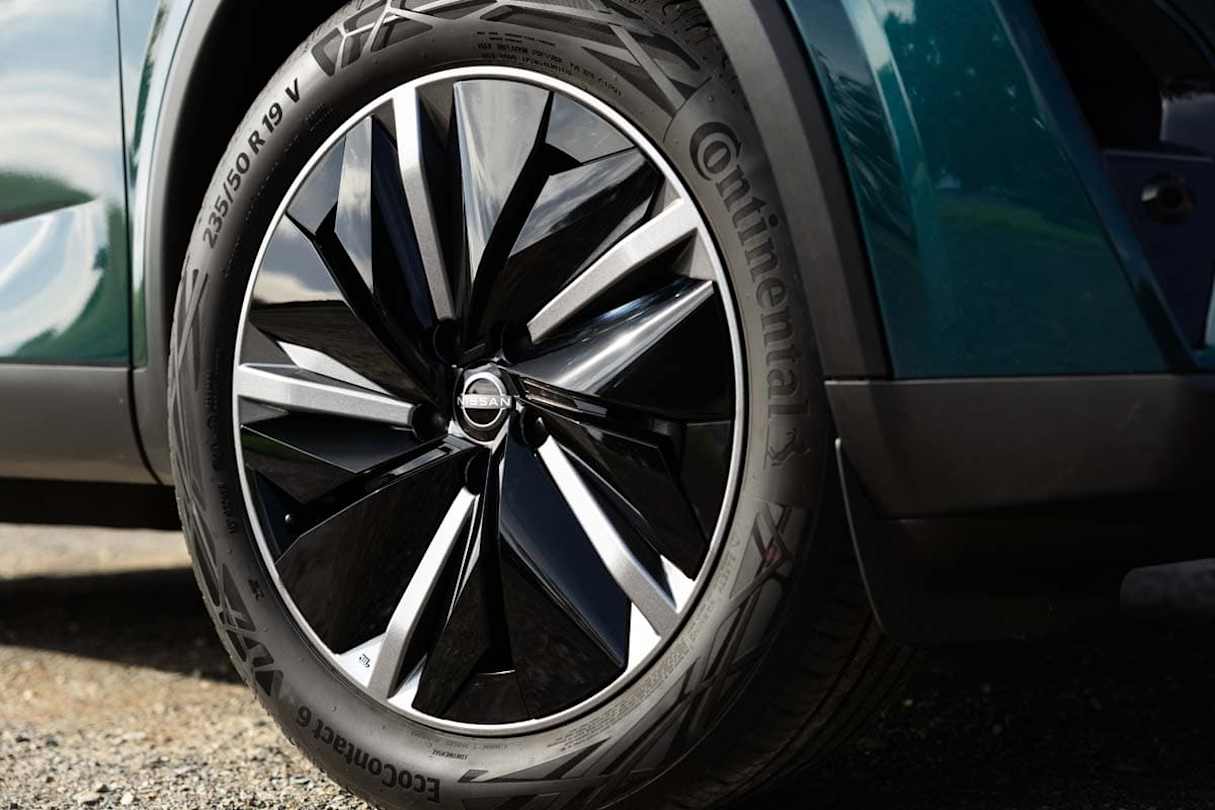
Now, prices rise by about $300 over last year’s amounts, meaning that the range commences from $34,665 (all figures are before on-road costs).
While they remain significantly higher than cheap Chinese equivalents like the Chery Omoda 5, GWM Haval Jolion and MG ZS, the latest Qashqai more or less lines up with quality Japanese and Korean rivals like the CX-30, Crosstrek, Toyota Corolla Cross, Honda’s HR-V and ZR-V, Hyundai Kona and Kia Seltos.
That said, Nissan is mimicking some Chinese brands with an “introductory offer”, with the lowest ST and ST-L grades discounted by $2000 and $1000 respectively – but only until April 30.

This is the cheapest that this-generation Qashqai has ever been, and that’s without factoring in the extra features that the MY25 models gain.
All grades now include a large touchscreen, wireless Apple CarPlay/Android Auto, dual-zone climate control, auto walkaway unlocking and a new three-year connected app subscription, offering remote functionality, security alerts, location services and somesuch.
There’s also a host of advanced driver-assist technologies as standard. More on those in the Safety section below.

Result? You could now happily live with the base model and not feel like you should have studied harder at school! And the ST-L, adding 18-inch alloys, a surround-view monitor, phone charger, sat-nav and front parking sensors, is now very nicely equipped from $38,665.
Meanwhile, the intriguing, EV-first hybrid model marketed as e-Power switches from the previous Ti spec (widescreen digital instrumentation, powered driver’s seat, heated front seats, PVC/leather upholstery, ambient lighting, 19-inch alloys, roof rails, and all from $42,965) to more-luxurious Ti-L guise (boasting 20-inch alloys, glass roof, massaging front seats and more), with only a slight price bump. From $48,165 (internal combustion engine, or ICE) and $52,365 (e-Power).
Keep in mind that the new sporty N-Design from $54,365 is e-Power-only, so no ICE equivalent exists for now, and serves as the Qashqai’s racy-looking flagship.

To refresh, Nissan pitches e-Power against more-conventional hybrid electric vehicles (HEV), including the C-HR HEV, HR-V e:HEV, ZR-V e:HEV, Kona N-Line HEV, GWM Jolion Hybrid and MG ZS Hybrid+.
Disappointingly, however, and despite previously hinting at it otherwise, the company hasn’t imported a lower-spec Qashqai e-Power to Australia.
That all said, value remains the name of the game for the MY25 version. And it isn’t even the most compelling thing about Nissan’s latest European small SUV.

Let’s check out what’s changed on the outside.
Design – Is there anything interesting about its design? 9/10
9 / 10
Now in its third iteration since 2007 (the original was launched in Australia as the Dualis), today’s generation switches to a global Renault-Nissan-Mitsubishi Alliance architecture dubbed CMF-CD.
Designed and engineered in the UK as before, it is still very recognisably a Qashqai despite growing in all dimensions. And why not – consistently strong demand has seen the series become one of the best-selling British vehicles of all time.
To keep the weight from ballooning, aluminium is used in the doors, bonnet and front guards, for a 60kg saving, while body-in-white stiffness improves by 41 per cent.
For the MY25 facelift, the Nissan has gone for a more premium look and feel inside and out.
A dramatically themed nose adopts quite the LED light show, flanking a 3D-effect grille inspired by traditional Japanese Samurai shield design.
More up-spec models gain new, body-coloured side mouldings, as well as fresh alloy wheel styles, with the continuing 18 and 19-inch items now joined by quite striking 20-inch ones that fill out the mudguards nicely.
From the rear, you might also notice the now-clear tail-light lenses with different LED motifs. Otherwise, that’s essentially it for the MY25 Qashqai’s exterior changes.
The ambience also enjoys a lift inside.

Practicality – How practical is its space and tech inside? 8/10
8 / 10
The Qashqai is roomier than previous generations, thanks to a 19mm wheelbase stretch, improving the proportions as well as entry/egress, rear-seat legroom and cargo capacity compared to the older design.
But while that’s the same as last year’s model, a boost in materials and trim across the grades underlines the Nissan’s European heritage. It’s also said to be quieter, due to more sound-deadening in the firewall.
The N-Design cops some smart suede covering on the dash, which seems very posh, while the passenger side of the fascia has been slightly redesigned to give it a squared-off look.
Instrumentation remains clear and concise, with plenty of configuration to match an increase in ambient lighting choices in the more-expensive grades, while all Qashqais including the ST now feature the larger of the central display options – in this case a 12.3-inch touchscreen.
Otherwise, it's the usual, quality third-gen Qashqai fare inside. That translates to great seats, a decent amount of space up front, excellent storage, and intuitive (and most welcome) buttons and controls.
We’re also glad that the panoramic roof, where fitted, retains a solid cover. Other brands should pay attention to this.
This is a very user-friendly interface experience.
On the other hand, rear vision is limited, while the overall design is beginning to look a little dated compared to fresher rivals. It’s still easy on the eye, though.
Moving back, the (non-reclinable and non-slidable) rear seat is fairly spacious for most needs, given this is a small SUV. Taller occupants may find that knee room is limited. Otherwise, amenities abound, including a centre armrest with cupholders, overhead grab handles, air vents and (extra) USB-C ports.
Finally, out back, while the e-Power version of the Qashqai does lose up to 100L of cargo capacity compared to the ICE version (which ranges from 479L to 504L depending on the size of the alloys), the N-Design (404L) does boast a temporary spare wheel – a super bonus in a hybrid SUV – while the Ti-L e-Power (452L) doesn’t, oddly.
Meanwhile, under the bonnet, things remain interesting.
Under the bonnet – What are the key stats for its engine and transmission? 9/10
9 / 10
Nothing's changed under the bonnet, which means that you still receive a 1.3-litre four-cylinder turbo petrol internal combustion engine (ICE), driving the front wheels via a continuously variable transmission (CVT).
Renault, Mercedes-Benz and others also employ this unit. In Qashqai for Australia, it produces 110kW of power at 5500rpm and 250Nm of torque between 1600-3750rpm.
Alternatively, the e-Power hybrid consists of a 1.5-litre, three-cylinder petrol turbo engine with variable compression ratio, that charges a 2.1kWh lithium-ion battery, to power the electric motor to also drive the front wheels.
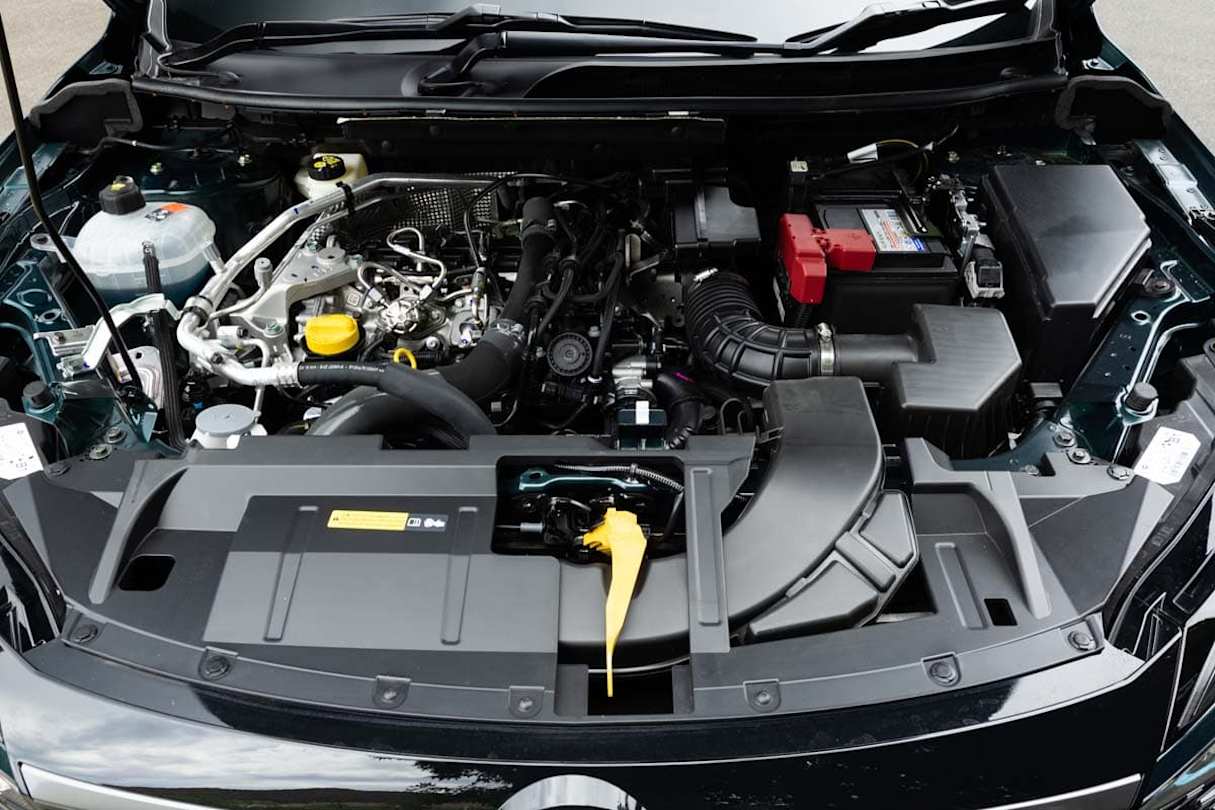
This means that, rather than having a gearbox, it uses a single-speed reduction-drive transmission.
The e-Power engine alone makes 116kW and 250Nm, while combined power and torque outputs are 140kW and 330Nm respectively.
Along with eco, standard and sport driving modes, the e-Power adds the choice of a one-pedal driving function, that acts as a dynamo to slow the car down (not to a full stop, mind) while providing some additional battery recharge.

E-Power, then, remains as an easy yet effective stepping stone between a regular hybrid and a full EV. And you won’t need to plug it in, ever.
Note, however, that the e-Power’s braked towing capacity is halved from the ICE version’s 1500kg.
Keeping all that under control is a MacPherson style strut-front and multi-link rear suspension set-up.
Efficiency – What is its fuel consumption? What is its driving range? 8/10
8 / 10
Nissan claims the ICE and e-Power Qashqais average between 5.8 and 6.1 litres per 100km, and 4.8L/100km, respectively.
Brimming the 55L fuel tank, expect a theoretical range of up to about 940km (ICE) and 1140km (hybrid) between refills for the latter.
These figures translate to CO2 ratings between 134 and 138 grams per kilometre (ICE) and 112g/km (hybrid) – not too bad for a small-ish hybrid SUV that weights up to 1732kg (kerb).
Note, though, that they have a thirst for more-expensive 95 RON premium unleaded petrol.

So much for the theory.
On our 200km or so launch loop in the ICE version of the Qashqai, we managed a frankly disappointing 10L/100km, although the engine was very new and tight, whilst the e-Power delivered an extremely respectable 5.5L/100km.
That’s a hard figure to ignore, particularly when you consider how much more oomph electrification brings.
Driving – What's it like to drive? 8/10
8 / 10
So, what's the MY25 Qashqai like from behind the wheel?
Given that there have been no changes mechanically, it's no surprise to learn that the Nissan feels the same to drive compared to last year's model.
In the e-Power, this means ultra-smooth and near-silent acceleration, at least initially, backed up by a surge of instant torque, highlighting the EV-first powertrain at play here.
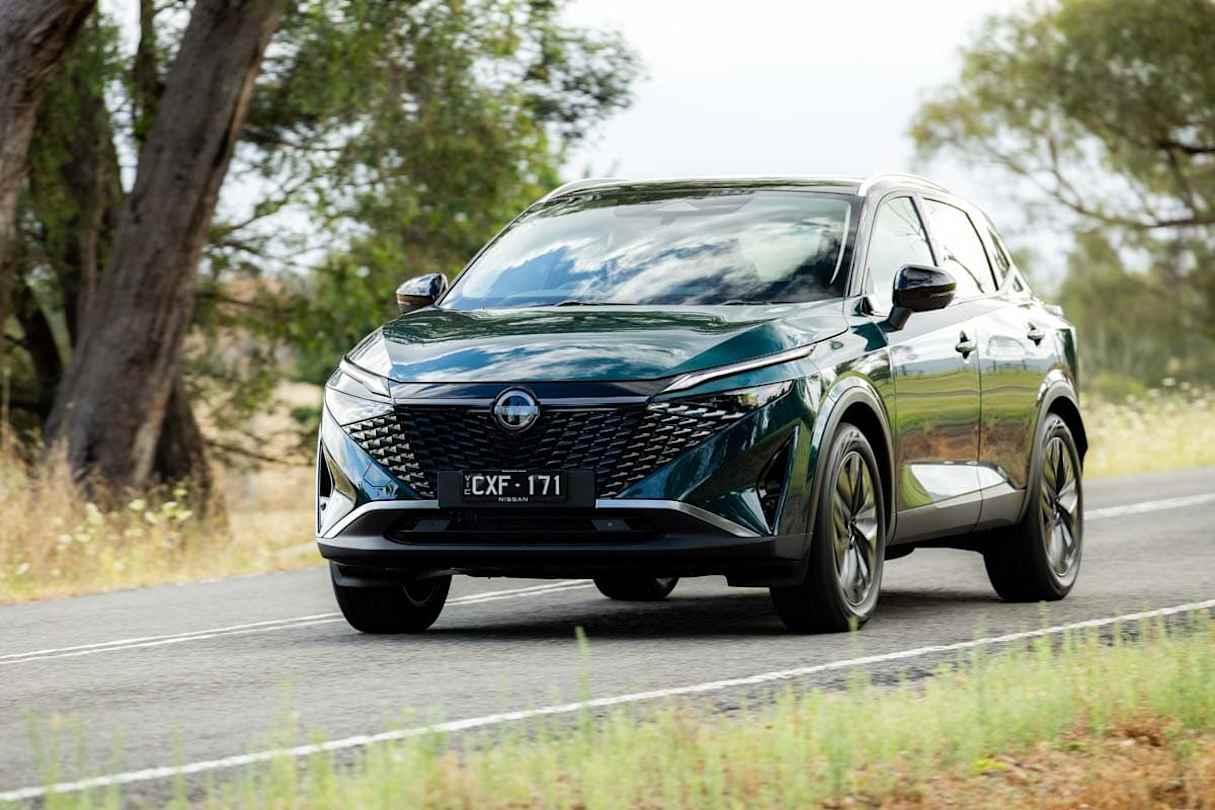
And while you do notice the petrol engine chiming with an oddly consistent drone to help replenish the battery, it isn’t too loud or unpleasant. And the extra muscle it provides helps make the hybrid Qashqai a rapid point-to-point machine.
Responsive steering is another plus point, for engaging and precise handling. And, unlike most hybrids and some EVs, the e-Power somehow manages to avoid the dreaded dead/wooden brake-pedal syndrome, and instead delivers reassuringly progressive stopping abilities.
However, in one example of the N-Design e-Power wearing the standard 20-inch wheel/tyre package, we experienced a dramatic weight shift when attempting a fast left-right turn through a roundabout, causing the rear to break traction and swing out slightly. The stability control immediately prevented a spin, staving off any potential whoopsies, but it was disconcerting, especially as this happened on a hot, dry day.

In contrast, the standard 1.3-litre turbo-petrol engine versions felt altogether lighter and more athletic – no shock given their 200kg advantage compared to e-Power equivalents. And that manifests itself in a car with greater agility, a little bit more control, and ultimately a more fun small SUV to drive.
The ICE Qashqai is also quite a quick thing, as long as you're willing to prod the pedal a bit longer and harder, since it doesn’t enjoy the electric motor assistance (or real-world economy) of its hybrid sister. You’d also be hard pressed to pick it as a CVT, unless you fang it.
From an overall model-range point of view, on the 20-inch wheel Ti-L and N-Design grades, the suspension feels fairly compliant, at least on the roads we tested them on, balancing comfort and control. The larger alloys do make the ride feel a bit firmer over some surfaces, but never harsh or crashy. The Euro Nissans provide pleasing refinement.
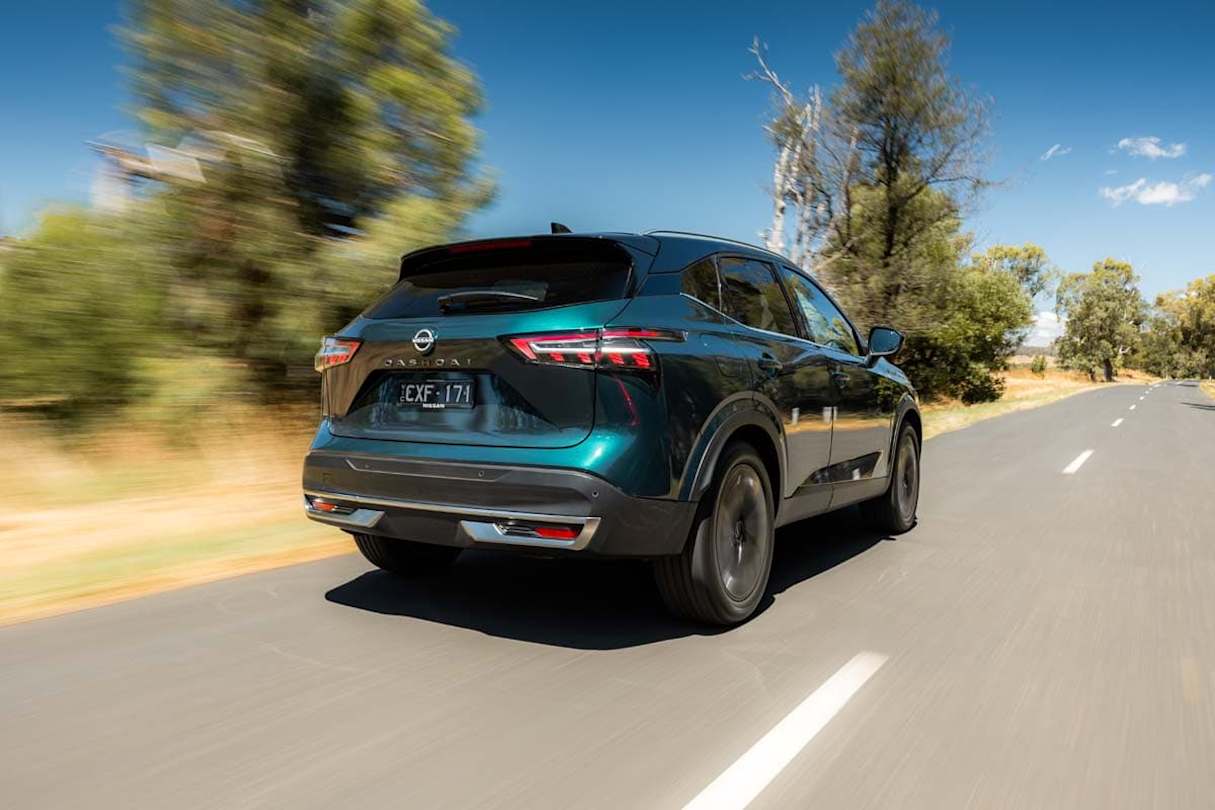
Credit, too, for the company bothering to expertly road tune the software. The electronic driver-assist systems work with and not against the driver, intervening with a level of nuance that roundly shames the many ill-sorted Chinese SUV alternatives in this area – including more-expensive EV models. No paranoid chimes, incessant buzzes or obtrusive wheel tugging here to annoy, distract and infuriate.
Indeed, dynamically, the Qashqai is right up there with many premium European SUVs costing much more.
If it wore an Infiniti badge rather than a Nissan one, nobody would bat an eyelid. Worth the premium over cheaper, less complete alternatives? We think so.

Safety – What safety equipment is fitted? What is its safety rating? 8/10
8 / 10
Even though the pre-facelift model scored a five-star ANCAP crash-test rating, there are some differences between the cheaper and more expensive Qashqais when it comes to technology.
Namely that, for Nissan’s Pro-Pilot active lane-keep assist tech, a surround-view camera, front parking sensors and an alarm, you’ll need to stretch to the Ti grade and up.
Otherwise, all models include the expected driver-assist safety systems, including autonomous emergency braking (AEB) fitted front and rear with pedestrian, cyclist and back-over detection, lane-keep assist systems, blind-spot warning, adaptive cruise control, a driver fatigue monitor, auto high beams, traffic sign recognition, rear parking sensors, anti-lock braking system with brake assist, Electronic Brake-force Distribution, hill-start assist, stability control, traction control and seven airbags with front-to-rear curtain as well as front-centre occupant protection.

The e-Power also adds a vehicle approach sound for pedestrians and cyclists. Note, too, that Nissan’s AEB kicks in from 5-130km/h, pedestrian and cyclist AEB from 10-80km/h, and the lane support systems work between 60-250km/h.
Finally, ISOFIX child-seat latches are fitted to outboard rear seat positions, while a trio of top tethers for straps are included across the rear bench.
Ownership – What warranty is offered? What are its service intervals? What are its running costs? 10/10
10 / 10
Finally, we've saved the biggest and best MY25 Qashqai news for last.
While the regular five-year/unlimited kilometre warranty continues, if you choose to have it serviced at a Nissan dealer, that extends to 10 years and 300,000km, and includes roadside assistance.
The petrol versions are due for a service every 15,000km/12 months, but the e-Power hybrid variants are due for a check every 10,000km/12 months.

Furthermore, you only pay $399 per service for the first five years, and that represents a saving of over $1050 compared to the pre-facelift Qashqai.
Collectively, they make this warranty scheme the best in the industry. Nice work, Nissan. A rare 10/10 for you in this segment.
Verdict
The Qashqai is a rare case of being beyond the sum of its parts.
While far from perfect, the small SUV manages to be a high-quality, enjoyable, spacious, dynamic and very economical (in e-Power guise) proposition. Its upmarket aspirations aren’t overly ambitious.
But much more than that, the MY25 facelift gains the very welcome backing of Nissan in a way that no other car company currently offers across the board, making it an essential entrant on every small SUV shortlist.
Note: CarsGuide attended this event as a guest of the manufacturer, with accommodation and meals provided.
Pricing Guides



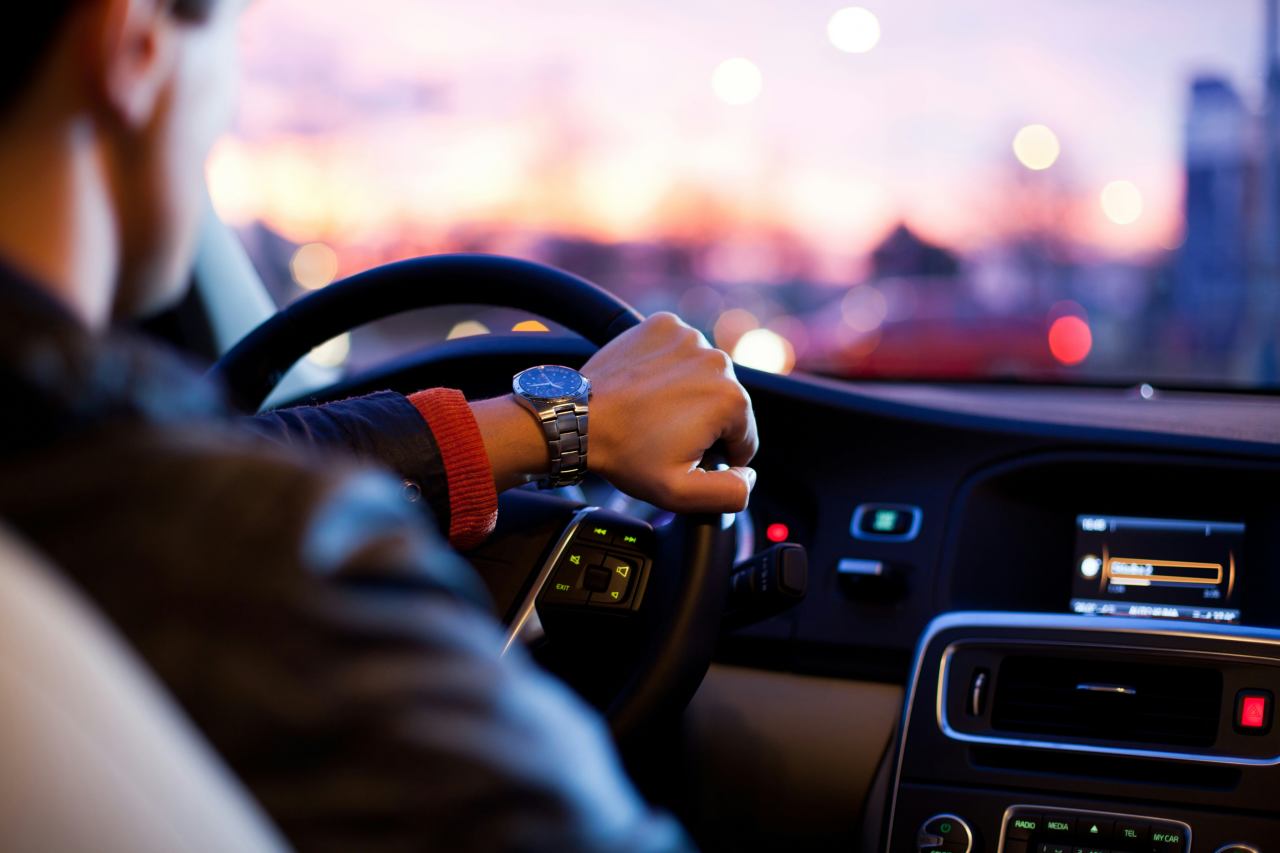







































.jpg)
.jpg)

.jpg)
.jpg)
.jpg)
.jpg)

.jpg)
